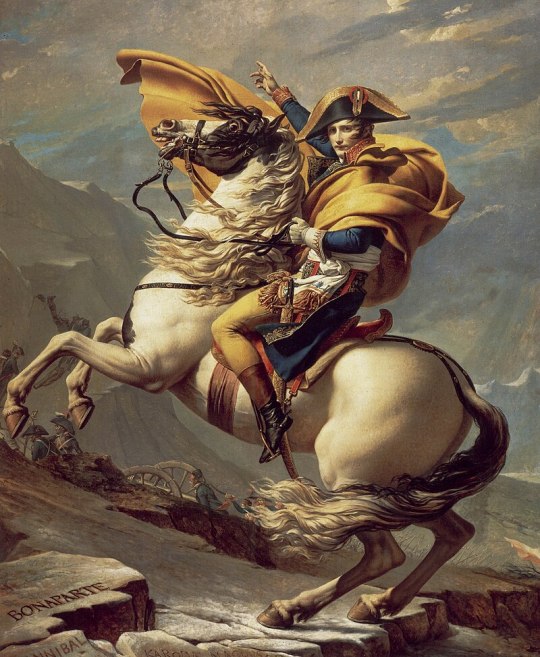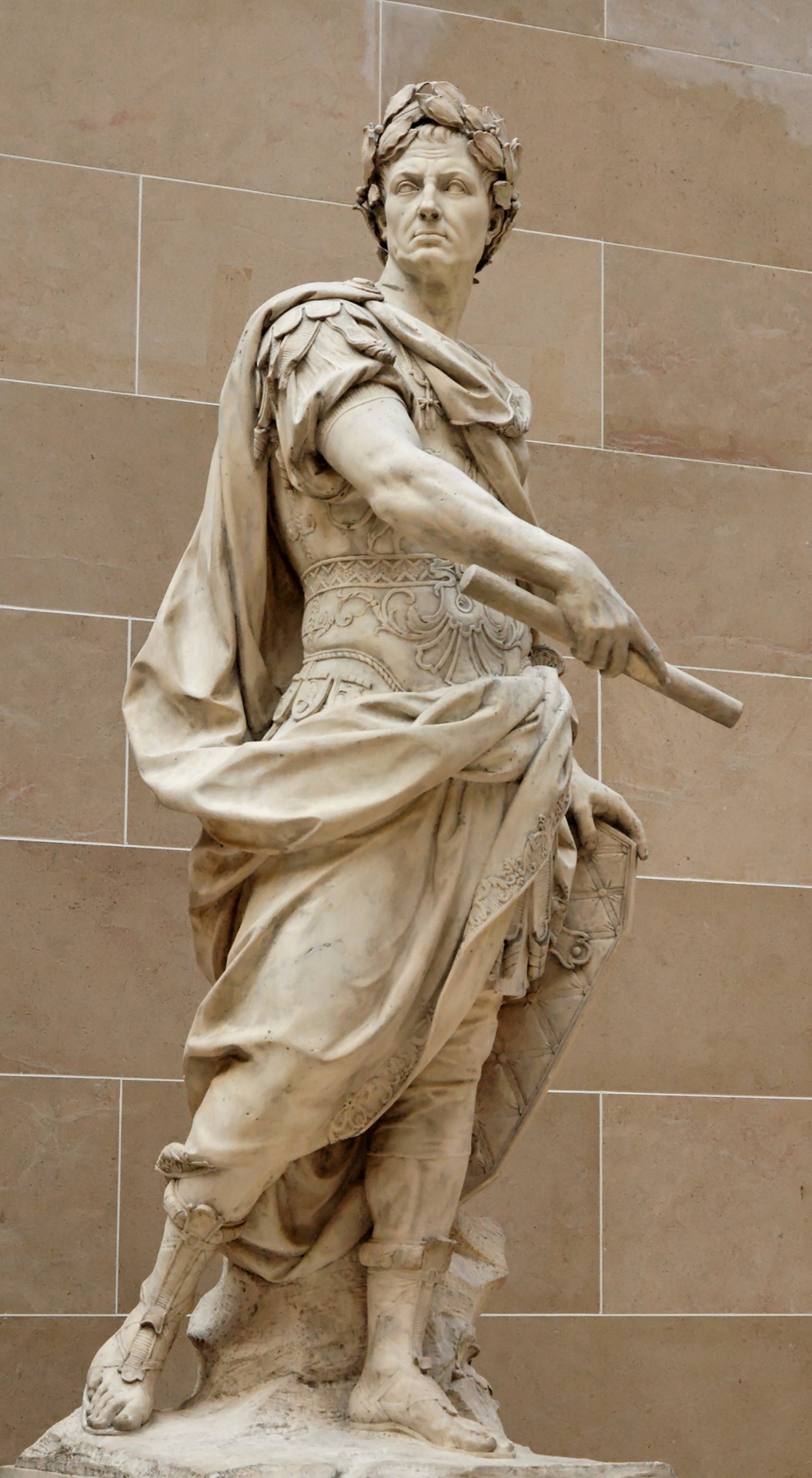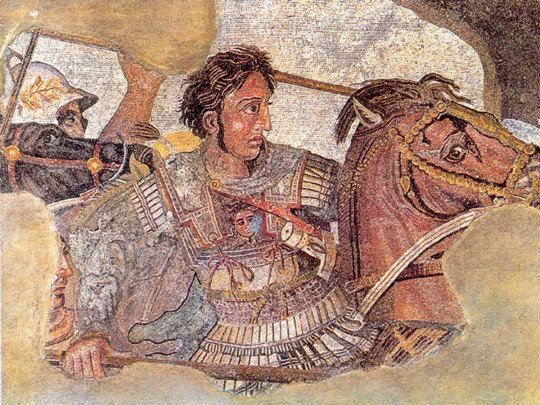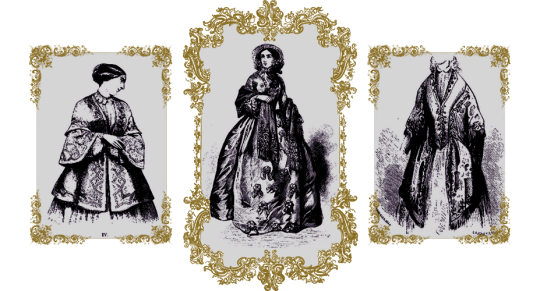#famous publishers in india
Explore tagged Tumblr posts
Text
Hindi Books Publisher: FingerPrint Publishing

FingerPrint Publishing is a renowned Hindi books publisher in India. With a wide range of publications, Our aim to bring quality literature to readers across the nation. We dedication to promoting Hindi literature and culture is evident in our carefully curated collection of books. From fiction and non-fiction to poetry and historical texts, FingerPrint Publishing covers a diverse range of genres. We believe in nurturing emerging authors and providing them with a platform to showcase our talent. With our emphasis on quality content and visually appealing design, FingerPrint Publishing has become a trusted name in the Indian publishing industry.
#Hindi Books Publisher#Hindi Books#Hindi Books publisher in India#books publisher#Best Books publisher in india#Top publisher in india#Top online book publisher in India#Top online sales publisher#International award winning publisher in India#Fingerprint publishing books publisher#Top author book publisher#Famous book publisher based in India#Top Global Publisher
0 notes
Text
I can't believe I'm actually having to argue with people about this, but yes, the Official and Ineffable adaptation of the GOOD OMENS novel into a graphic novel is actually OFFICIAL, like as in very official and real, and I am not some ne'er do well absconding with rights I don't have rights to.

I am working as the hire of the Terry Pratchett estate and Neil Gaiman. I didn't grab the book and run away with it, and make comic book pictures unbidden.
The Kickstarter launches today. The Terry Pratchett Estate is self publishing it through their company Dunmanifestin.
All of this is very easy to research on the internet. Because there are lots and lots of articles about it.
Like these.
https://www.thebookseller.com/news/pratchetts-and-gaimans-good-omens-to-be-adapted-into-a-graphic-novel?fbclid=IwAR385gG5SyD-IjBTLFkGzMRQEE2EEwvFBKgHCZU1aX6QgXfz-iMELxj589o
I've adapted a number of works by Neil Gaiman and have won some nice awards doing that, which is also easy to research.
The Kickstarter launches today at 12 EST.
I really appreciate that people are passionate about this, but I am also passionate about it and am very happy to be working on it.
It is not an adaptation of the show. It is an adaptation of the novel.
Thank you.
1K notes
·
View notes
Text
Croc Paleontology Recap January 2025
The year has just begun and already we got a bunch of pretty neat new studies on fossil pseudosuchians so I'll just briefly go over them and unless I forget or end up procrastinating/getting too busy I'll hopefully be able to keep this going throughout the rest of the year.
Just to give you a brief overview, the highlights of this month include: salt glands in gavialoids, crocodilian predation on azhdarchids, diversifications and extinctions in thalattosuchians and a new species of aetoaur from India. Lets begin.
Evidence for salt glands in gavialoids
Starting off with something relating to the dispersal of gavialoids, we got "Evaluation of the endocranial anatomy of the early Paleogene north African gavialoid crocodylian Argochampsa krebsi and evolutionary implications for adaptation to salinity tolerance in marine crocodyliforms" by Pliggersdorfer, Burke and Mannion.
The title already gives a lot away, but the point was that Argochampsa, from the early Paleocene Ouled Abdoun Basin in Morocco, was examined for evidence of salt tolerance. Why? Because the dispersal of gavialoids remains weird. Both modern forms aren't especially keen on saltwater and are only known to consistently occur in freshwater (tho we have a recent example of an indian gharial caught in a fishing net off the coast of India), yet we have plenty of extinct gavialoids that either indicate that the group must have crossed oceans (see any "gryposuchine") or straight up lived at sea (also see some "gryposuchines").
Now, one such example might also be Argochampsa. Both because the Ouled Abdoul Basin famously preserves coastal deposits and because, at least following some phylogenies, Argochampsa might be closely related to the gharials of South America and today (others say its not even a gavialoid but lets ignore that for now). So all things considered one might expect marine habits from Argochampsa, yet so far no such adaptations could be identified. Well, Pliggersdorfer and co. analyzed a thus-far undescribed skull and actually managed to find something. Small depressions on the inside of the skull are suspiciously similar to ones seen in the extinct, fully marine metriorhynchoids, depressions that in the latter have been interpreted as having been left by salt glands. There is also some further evidence through the morphology of the inner ear.
This conclusion further extends to a handfull of other taxa, including the dyrosaurid Rhabdognathus and the recently named gavialoid Sutekhsuchus, and lends itself to the hypothesis that salt glands may have been ancestral to gavialoids, something I personally find unsurprising given their proximity to crocodyloids and their dispersal across the world (really if anything alligatoroids seem like the odd one out).
Fun fact, yours truly is featured in the paper in the form of two silhouettes.
Left: Argochampsa, illustrated by Seismic Shrimp/JW Right: Piscogavialis, perhaps the most famous marine gavialoid, illustrated by Joschua Knüppe


The brain of Paralligator
Second on our neat little list, the neuroanatomy of Paralligator, studied through CT scans and 3D modeling and published on in "Neurocranial anatomy of Paralligator (Neosuchia: Paralligatoridae) from the Upper Cretaceous of Mongolia". Given that I am not great with brain things, I'll keep this one short.
Now for those unfamiliar, Paralligator is part of a somewhat strange clade known as the Paralligatoridae, which contrary to their name are nowhere near real alligators (tho some do look deceptively similar). Instead, they are much more basal members of Eusuchia.
Measurements of the olfactory bulbs, responsible for the sense of smell, indicate that in Paralligator this sense was similarily developed to allodaposuchids and crocodilians, as is the inner ear who's anatomy suggests a semi-aquatic lifestyle. Paralligator does however differ in possessing a mesothemoid, a bony septum in the olfactory region that is also seen in dyrosaurids, baurusuchids and dinosaurs, but not modern crocodiles.

Borealosuchus remains from Colorado
Tho seemingly unexciting, this study, "First record of Borealosuchus sternbergii from thelower Paleocene Denver Formation (lower Danian),Colorado (Denver Basin)" actually helps us fill a neat little gap in our previous knowledge on croc survival across the Cretaceous-Paleocene extinction.
Simply put, though America's croc record across the KPG is rather remarkable, showing both many survivors and some incredible diversification after the impact, Colorado is kind of a blind spot, despite its potential importance. Perhaps one of the best examples of a survivor concerns the genus Borealosuchus, which is both geographically and stratigraphically widespread. To put things into perspective, this genus occured as far north as Canada and as far south as Texas, first appearing in the Late Cretaceous and dying out in the Eocene.
This paper now described several skulls from the Corall Bluff's locality of the Denver Formation, earliest Paleocene, that can be attributed to Borealosuchus sternbergii, definitively extending its range beyond KPG (granted, there are tentatively referred Paleocene occurences elsewhere), making it one of the largest suvivors of the mass extinction, with adults growing up to 2.3 meter in length. The specimens from Colorado are smaller, in the 1.5 to 1.7 meter range, but they are also regarded as immature individuals and are therefore also regarded as usefull in illustrating how the animals changed as they grew into adulthood.
This paper is especially well timed for those that follow @knuppitalism-with-ue 's Formation Stream series. As you might know, Corall Bluffs is to be drawn barely a week from now and this is a fantastic addition.
Left: Borealosuchus drawn by Atak_Draws Right: Distribution of Borealosuchus by Lessner, Petermann and Lyson 2025


Growth of a peirosaur
Our next paper for discussion is "Life history and growth dynamics of a peirosaurid crocodylomorph (Mesoeucrocodylia; Notosuchia) from the Late Cretaceous of Argentina inferred from its bone histology" by Tamara G. Navarro and colleagues. This study conducted the first histology of peirosaurid limb bones, specifically of an indetermined taxon clading together with Uberabasuchus.
As a brief refresher, peirosaurids are a branch of medium to large sized Notosuchians that I personally think can be aptly described as appearing somewhat like scaly dogs or pigs with often robust, wedge-shaped heads and heavily armored bodies.
The results show that the animal had reached sexual maturity, yet was not yet fully grown. What's also noted is the exact growth dynamics of this animal. This is to say, the studied peirosaurid had overall slow growth with cycles of no growth whatsoever and two periods of increased growth, tho once put against other notosuchians the study deems the growth rates to be better described as "moderate". Pepesuchus meanwhile, belonging to the closely related itasuchids, was a fast grower. Extending things beyond their shared clade shows a virtual mish-mash of dynamics, with Araripesuchus buitreraensis displaying slow growth rates (yet Araripesuchus wegeneri having faster rates than the peirosaur), Iberosuchus showing slow rates, and Notosuchus displaying high growth rates (hell, theres even variation between individuals). A final point concerns the age of the individual, which is....contradictory. Based on the limb bones, the study estimates that the animal was at the very least 15 years old, but previous study of the osteoderms has yielded an estimated age of 18 years old. Ultimately, further study is needed, but it does clearly show how the histology of different parts of the skeleton varies.
Shown below, Uberabasuchus terrificus by Scott Reid

Predation on pterosaurs
Here's a fun one, "A juvenile pterosaur vertebra with putative crocodilian bite from the Campanian of Alberta, Canada", once again with a name that tells you very much what you're in for.
Brown and colleagues report on the discovery of a juvenile specimen of the azhdarchid Cryodrakon from the Dinosaur Park Formation of Alberta, Canada. The neck vertebra bears some conical bite marks, notably different from those of theropods, which generally have D-shaped or compressed tooth crosssections (sans spinosaurids, which aren't present). Champsosaurus is also ruled out due to its inferred feeding preferences, weak bite force and slender teeth. Mammals are potential candidates, but the team regards it as more likely that the trace maker was a crocodilian. Considering the fauna of the Dinosaur Park Formation, this would suggest the culprit was either Leidyosuchus, Albertochampsa or an animal described as "Stangerochampsa-like".
Now this is a very interesting, if not exactly unexpected interaction. On the one hand, having direct fossil evidence for this is a big deal, even if we don't know if the bite marks were left due to the pterosaur being actively hunted or if they were simply left when a lucky croc came across the carcass of an already deceased Cryodrakon. On the other hand, crocodiles and kin are notoriously opportunistic and broad in their diet, so one feeding on a pterosaur is something that seems like a no-brainer in principle, especially a relatively small individual with a wingspan of "only" 2 meters. This is further supported by the fact that crocodilian bite marks have also been reported from the Romanian pterosaur Eurazhdarcho.
Obvious difference in prey size and geography aside (and taxon names even within the chosen setting while we're on it), Prehistoric Planet really nailed the nailon the head with this one.
In the left corner, a juvenile Cryodrakton (art by Hank Sharpe). In the right corner, Leidyosuchus (art by Gunnar Bivens) LET THEM FIGHT (or scavenge)


Evolutionary trends and extinctions in Thalattosuchia
This one's a last minute entry, by which I mean this one got just published as I was about to wrap this whole thing up. "Analysing Thalattosuchia palaeobiodiversity through the prism of phylogenetic comparative methods" explores how the evolution and the extinctions of members of this group were shaped by both biotic and abiotic factors.
Given the shere breadth of this topic, a quick summary of thalattosuchia seems kinda in order. In short, thalattosuchians are a group of what are likely to be early crocodyliforms adapted to life at sea. They can be split into two groups, the teleosauroids, superficially gharial like animals that likely stuck to coastal waters, and the metriorhynchoids, open ocean animals with fluked tails, no body armor and paddle-like limbs. Both groups reached their greatest diversity in the late Jurassic, but managed to survive into the Cretaceous before disappearing entirely.
The study recaps that thalattosuchians first reach great diversity during the Toarcian, tho this is likely influenced by preservation bias thanks to Lagerstätten such as the Posidonia shale, and a later diversification takes place during the Bathonian. Regardless, the transition from the lower to middle Jurassic sees an increased trend in both thalattosuchian groups towards shorter snouts, which are associated with durophagy or hypercarnivory. This essentially gives rise to the teleosauroids of the Machimosaurinaei, which appear during the Bathonian and have blunt, robust teeth, as well as the metriorhynchoid Geosaurinae, which appeared at the same time and had ziphodont (serrated teeth). The reasons for this could be twofold. On the one hand, thalattosuchians were very abundant, so expanding into new nisches helped them coexist, with ecosystems preserving fish-eaters, hypercarnivores, durophages and more at the same time. More of an underlying factor could be a drop in ichthyosaur diversity, leaving plenty of open nisches for these crocs to fill.
Subsequently, during the transition from the Middle to Late Jurassic, there was another diversification event with both groups establishing new major clades, possibly associated with the warm temperatures of the Late Jurassic, before the diversity crashes with the onset of the Cretaceous. The authors note that this too might have been related to climate, with the Cretaceous survivors mostly being found in warmer waters.
Left: A Dakosaurus ambushing an ichthyosaur by Gabriel Ugueto Right: A large Machimosaurus rests on the beach as a sauropod approaches, art by Joschua Knüppe


and for the final study I wanna talk about
Kuttysuchus: A new Aetosaur from India
Now, by all accounts one might be surprised to see this just kinda thrown in at the end here rather than getting a dedicated post as I usually like to do with new forms. And truth be told, theres just not that much to say about "A New paratypothoracin aetosaur (Archosauria: Pseudosuchia) from the Upper Triassic Dharmaram Formation of India and its biostratigraphic implications".
Kuttysuchus is our first pseudosuchian to be described this year and to get things out of the way, its not super exciting in terms of material. Like some other recently named aetosaurs, Kuttysuchus is based entirely on a handfull of osteoderms. And there's nothing wrong with that, after all osteoderms are rather distinctive for these animals. It does however mean that the information we can get from them is a bit limited and thus makes it hard to really put together something engaging.
More interesting than the anatomy then is the range and its relationship to other aetosaurs. The fossils are known from the Dharmaram Formation of India, which you might recall is also home to the recently named Venkatasuchus. Both Venkatasuchus and Kuttysuchus are members of the Paratypothoracini, tho the former is significantly more derived and the latter more basal.
Fossil osteoderms of Kuttysuchus, all belonging to the central double row that stretches across the back.

I'll be entirely honest. This was a lot more work to type out than anticipated, but admittedly also fairly rewarding. Hopefully you dear reader found it equally interesting, and hey, congrats on making it to the end.
#palaeoblr#paleontology#prehistory#croc#crocodile#long post#pseudosuchia#sutekhsuchus#argochampsa#peirosauridae#thalattosuchia#metriorhynchoidea#teleosauroidea#kuttysuchus#aetosauria#paralligator#leidyosuchus#cryodrakon#borealosuchus
98 notes
·
View notes
Text

Today on the second advent and door no. 8 we have a lovely pair, La Grace and Shtandart

More about them here:
La Grace is a replica of a historic tall ship from the 18th century that will sail the seven seas like the original ship 300 years ago. The aim of the project is to give anyone interested the opportunity to sail a historic ship as part of the Navy's training programme and to share the proud traditions of sailing.
The brig was built between 2008 and 2010 by a group of volunteers from the Czech Republic and Slovakia in an Egyptian shipyard in Suez using traditional craft techniques. The brig was designed by its owners (Josef Dvorsky and Daniel Rosecky) according to technical drawings published in 1768 in the Architectura navalis mercatoria by the Swedish admiral Fredrik Henrik af Chapman.
According to available sources, the original La Grace was a ship owned by the first Czech naval captain Augustin Herrman, a famous navigator in Czech history. He sailed across the Atlantic in the service of the Dutch West India Company. After leaving the company, he commanded the small privateer ship La Grace. This relatively weak and vulnerable ship with six cannons brought large quantities of captured Spanish galleons to New Amsterdam every year.
The Shtandart is a replica of an 18th century frigate. The original was the first frigate built at the Olonez shipyard under Peter the Great and the first ship to be commissioned as a frigate for the Baltic Fleet. During the Great Northern War, Tsar Peter succeeded in conquering the area that would later become St Petersburg on the Neva. With the conquest of the fortress of Nöteborg in 1702, Lake Ladoga was removed from Swedish control and the Tsar hoped to gain access to Finland. The aim of these endeavours was to gain access to the Baltic Sea in order to establish a port city there for trade and naval purposes.
The frigate was built from 1702 at the Olonez shipyard on the Lodejner Feld on the River Swir near Lake Ladoga, where it was given its name in reference to the newly introduced Russian naval flag, a standard. Tsar Peter personally transferred the ship to the Baltic Sea in 1703. When seven Swedish ships of the line, five frigates and other small ships attacked the mouth of the Neva in June 1705, eight Russian frigates, presumably including the Schandart, lay behind a barrage of trees. In 1712 and 1713, she took part in troop landings in Swedish Finland near Vyborg. No further use is mentioned after this action. The ship was decommissioned as unserviceable in 1718. In 1723, the ship was scrapped in St. Petersburg.
According to another version, Tsar Peter had ordered the Schandart to be preserved as a reminder of the beginnings of the Russian fleet. Tsarina Catherine I ordered the condition of the Petrine ships to be examined in 1727. However, the Shtandart broke up while trying to take her out of the water.
As a result of the sanctions against Russia following the Russian invasion of Ukraine in 2022, Russian ships are denied access to European ports. However, following a request from the Président des Amis des Grands Voiliers association to the French Secretary of State, the Shtandart was granted permission to call at French and Spanish ports and has remained there ever since. There are plans to put her under the French flag, as her captain strongly distances themselves from Russia.
#naval history#tall ships#brig la grace#frigate shtandart#18th century#replicas#age of sail#advent calendar#day 8
108 notes
·
View notes
Text
Being a “centrist” sounds eminently reasonable, doesn’t it? A centrist is a moderate, right? Someone who is rational and practical and takes the middle ground. Someone who isn’t extreme like those crazy ideologues on the far right or far left. A centrist, logic dictates, is really what everyone should strive to be. But stop for a moment and ask yourself how you would define a centrist in more specific terms. When you start spelling out what the word really means, it becomes clear that it obfuscates more than it illuminates. The word does not describe a set of ideas so much as it reinforces a system of power. This, of course, is a feature not a bug of political language. As George Orwell wrote in his famous essay Politics and the English Language: “In our time, political speech and writing are largely the defence of the indefensible. Things like the continuance of British rule in India, the Russian purges and deportations, the dropping of the atom bombs on Japan, can indeed be defended, but only by arguments which are too brutal for most people to face, and which do not square with the professed aims of political parties. Thus political language has to consist largely of euphemism, question-begging and sheer cloudy vagueness.” Orwell wrote that essay in 1946. Today, 78 years later, it feels just as relevant. Look, for example, at the carnage in Gaza and the West Bank. Look at the statements from Israeli leaders that clearly suggest genocidal intent. Look at the tragedies that barely make a dent in the public consciousness any more. Last week, for example, an Israeli airstrike killed four-day-old twins, along with their mother and grandmother, when their father went to collect birth certificates in central Gaza. Look at the levels of brutality that barely seem to register any more: there is video evidence of the sexual abuse of Palestinians at a notorious Israeli military prison (though the more accurate term is “torture camp”) and, even with that evidence, we know there will be no real accountability. Look at the dead. Nearly 40,000 people in Gaza are now dead, including nearly 15,000 children. When you look at the scale of devastation, it seems likely that those figures are an underestimate. Further, counting the dead is excruciatingly difficult: kids are being blown into fragments so small that their surviving relatives have to collect pieces of them in plastic bags. Then there are the tens and thousands more who are now dying from starvation, or facing a looming polio epidemic. Look at the West Bank, meanwhile, where Israel has published plans for new settlements, which violate international law. Since 7 October, the Israeli army and settlers have displaced 1,285 Palestinians and destroyed 641 structures in the West Bank, according to the United Nations Office for the Coordination of Humanitarian Affairs. Ethnic cleansing is taking place before our eyes. Now look at how all of this is being justified. This war isn’t just being waged with bombs, it’s being waged with “euphemism, question-begging and sheer cloudy vagueness”. When you lay out what is happening in clear language, it is indefensible. So political language dresses all those dead and starving children up in euphemism. It obscures ethnic cleansing with vagaries. Don’t believe your eyes, political writing says. What you are seeing is far more complex than your eyes can possibly comprehend.
[...]
In order to defend the indefensible, politicians and political writers move away from concreteness, from clear language, and hide behind the respectableness of terms like “centrism”. Pro-Palestinian protesters are labelled the far-left or extremists. Continuing to unconditionally send arms to Israel and shield the country’s far-right government from accountability, however, is considered a centrist – and therefore reasonable – position.
[...]
As Orwell wrote, atrocities can be defended, “but only by arguments which are too brutal for most people to face, and which do not square with the professed aims of political parties”. If the Democratic party were to be honest about why it is doing very little to stop the carnage in Gaza and the settlements in the West Bank, the bluntest argument would be along the lines of: “Israel is an important tool in maintaining US imperialism and western interests. The ethnic cleansing of Palestinians is expedient to those interests. Human rights law doesn’t apply to atrocities enabled by the west.” Of course, being pro-ethnic cleansing doesn’t quite square with the do-gooding branding of the Democratic party. Instead, we are bombarded with the idea that massacring children is somehow a centrist and moderate position.
22 August 2024
131 notes
·
View notes
Text

“Two years ago, when George first started experimenting with Indian music, he reached a point when he nearly quit the Beatles. He yearned for the new life that was awaiting him in India. He told [Don Short]: ‘I felt I wanted to walk out of my home that day and take a one-way ticket to Calcutta. I would have even left Patti[e] behind in that moment and all I would have taken would have been my sitar.’“ - Daily Mirror, February 19, 1968 “George was a human being. He was human, terribly good-looking and very famous. He had his ups and downs. Temptations were thrown at him continually. If you’re gonna decide that you’re gonna be a priest it’s very difficult. I think George was far more aware than other people of the continual battle of one’s demons. We all have demons inside of us. We’re all full of black and white. He struggled with it. He always wanted to be a good man and do the right thing.“ - Pattie Boyd, interview conducted by Ken Sharp, 2007, published in The Mammoth Book of The Beatles (2009)
#George Harrison#quote#quotes about George#quotes by George#Harrison spirituality#George and Pattie#George and fame#The Beatles#1960s#1968#1969#2000s#fits queue like a glove
86 notes
·
View notes
Text
Work acquaintance, ostensibly as a joke about me and my interests, asked if I had any educational reading recommendations about "Santa's sleigh"
So, to pass the time, I thought we'd have a dialogue about the history of urban vehicularization, pedestrian encounters with vehicles, and control of space and mobility, through the "vehicle" (pun intended) of a case study of carriages and sleighs in eighteenth-century Amsterdam.
---
And none of this is to be taken seriously, I'm just saying words recreationally. But Amsterdam is important in the history of urban space. It was the site of early speed limit regulations for vehicles: In 1681, a bylaw limited vehicle speed to walking pace (stapvoets), and a 1696 deposition describes the servants of a sheriff stopping a driver for driving too fast. By the 1770s, the sleigh-man's guild had 285 sleigh-men active year-round, not counting unregistered personal sleighs, or those who used sleighs over snow in winter. The (colonialism-fueled) expansion of the city's infrastructure (in the context of maritime trade and East India Company profits) allowed sudden, dramatic architectural expansion, though there was uneven adoption of new transportation methods of wheeled vehicles in newly-built edges of the urban area (where textile factories were situated) while maintaining the architecture of the dense streets of the medieval city core, so that sleighs and carriages existed side-by-side in a way that was distinct from the streets of Paris and London.
In 1790, visiting German scientist Georg Forster described Amsterdam as such: "The whole day long, a continuous thunderous roaring dominates. The manifold carriages of mayors, councilors, state officials, directors of the East India Company, physicians and the lavishly rich, the unremitting transport of goods [...] obstruct the way of passage and cause a constant yelling and rumbling [...]."
But history scholar Bob Pierik (in an article that opens with Forster's lamentation) describes how Amsterdam was an early site of "vehicularization" and related street regulations, and he finds this notable and worth considering because it anticipated and predated the more famous and more widely discussed urban regulations and policing of properly-industrialized nineteenth-century London, which allows us to perhaps rethink the historiography and "teleological narrative" of modernity.
Since vehicles, pedestrians, and their attendant regulations were experimented with in the Dutch metropole decades before the mechanized transportation and "politics of paving" in Victorian Britain, there were what Pierik calls "multiple modernities" existing simultaneously in the streets of early modern Amsterdam (a "proper metropolis" at that time).
---
Evidently, "sleighs had been an important part of street life in Amsterdam long before coaches and chaises." Indeed, Pierik invokes the observation of English author Samuel Ireland from 1789, describing a visit to Amsterdam: "[C]arriages with wheels, except for the use of the nobility and gentry, were not suffered here for many years […]. A sleigh, as the Dutch term it (the French a traineau or pot de chambre) is now in use: it is the body of a coach, without wheels […]."
And guess what? They dragged those sleighs over pavement. No wheels, but only "an oily cloth (a smeerlap) was used to smoothen the passage."
A piece of rhyming graffiti, written on a wagon, and collected by Hieronymus Sweerts between 1683 and 1690, reads:
Who drives fast make a quick start
But easily loses their horse and cart
Careful and sen-
Sible is a good carriage man.
(For all excerpts and arguments here, by the way, see: Bob Pierik. "Coaches, Sleighs, and Speed in the Street: "Vehicularization" in Early Modern Amsterdam." Journal of Urban History, Volume 50, Issue 4. First published online 2 September 2022.)
Along with sleighs for transporting goods and products, there were sleighs for personal transport: a toeslee (closed sleigh) and koetsslee (coach sleigh).
---
And what of the pedestrian? Early on, at least in the Netherlands, vehicles were perceived as dangerous to pedestrians, and it could apparently be seen as arrogant to flaunt aristocratic wealth by gallavanting around in an expensive personal carriage in the city center, and so regulations and public opinion seem to indicate that pedestrian right-of-way was prioritized. An Amsterdam bylaw from 1528 indicated that drivers of sleighs could not sit upon their vehicle but had to walk beside it, because:
"[D]riving caused great disorder, often mixed with malice, as people, specifically women and children, are at great danger of being driven over."
An important city bylaw in 1634 banned the use of coaches within city walls. But the prohibition was gradually loosened, such that conflict between coach-drivers and pedestrians was frequently mentioned in depositions. But by the 1730s, something had changed. In Pierik's words:
[Quote.] Pedestrians now shared space with vehicles and had a new responsibility to protect themselves […]. [T]he language used in Bicker’s chronicle is very telling: In 1734, exactly a century after the vehicle ban, he wrote of a coachman who “had the misfortune of driving over a poor woman who died shortly thereafter.” Here, rather than the “women and children first” rhetoric that we have seen in the sixteenth-century regulations on the sleigh-men in the previous section, the coachman was also presented as a victim, and the right of the coach’s presence on the streets remained undisputed. Similarly, in 1746, Bicker Raije wrote of a nine- or ten-year-old boy who was “negligently watching around him” moments before he was killed by a sleigh horse. [End quote.]
The trend continued, and in the nineteenth century, British authorities would notoriously enact sweeping policies to control mobility in and access to urban space, in ways that prioritized "economic" activity while reinforcing class hierarchies. In fact, Pierik sees this vehicularization of the early modern city as "at once a civilizing and a colonizing project" in the same vein as what Koslofsky described as "nocturnalization," or the way in which, in London and Paris, "the elites of the court and the city colonized the urban night" with their affordance of transportation and a mobility not always shared with those lower in the hierarchies.
We are, of course, reminded of another aristocratic figure who, traveling through the night, engaged in this civilizing mission of nocturnalization and colonized public space with their vehicle. Someone who, like the early modern vehicle regulations of Amsterdam, is associated with Dutch tradition. Someone whose persona is closely connected to mobility, even hyper-mobility, drawn forth by their sleigh:
Santa Claus.
56 notes
·
View notes
Photo

The Conquest of New Spain
The Conquest of New Spain by Bernal Díaz del Castillo (1492 to c. 1580) is an account written in 1568 of the early Spanish colonization of Mesoamerica, specifically the conquest of the Aztec civilization in Mexico from 1519 to 1521 when Díaz was a member of the conquistador expedition led by Hernán Cortés (1485-1547).
Bernal Díaz
Díaz was born in 1492 in Medina del Campo, Valladolid, in Spain. Like many young men of his generation, he sought his fortune in military escapades in the New World. Díaz was in Nombre de Dios in Panama in 1514 where he served Pedro Arias de Avila (aka Pedrarias Dávila, b. 1442). In 1517, Díaz moved on to Cuba where he served under another infamous colonial governor, Diego Velázquez de Cuéllar (1465-1524). Velázquez was keen to find out more about the Yucatán Peninsula – then considered just another Caribbean island. Cuéllar sent two expeditions of exploration to Mexico: one in 1517 led by Francisco Hernández de Córdoba (1474-1517) and another in 1518 led by Juan de Grijalva (1489-1527). Díaz was on both expeditions as an ensign, and they have a chapter each devoted to them in Díaz's chronicle, but it is inconsistencies in the geography of these expeditions which have led some to doubt Díaz's participation.
Velázquez was so intrigued by the reports of the first two expeditions concerning a large civilization to the west that he determined to send out a third reconnaissance mission, this time to be led by Hernán Cortés. Díaz went on this expedition in 1519, but Cortés was ambitious for much more than information and was intent on conquest and riches.
After the campaign against the Aztecs, Díaz had an official position in Guatemala which included an encomienda license to extract labour from the indigenous community. Díaz visited Spain again but ultimately returned to Guatemala to write his famous work in the last years of his eventful life. The original title in Spanish is Historia verdadera de la conquista de la Nueva España ("The True History of the Conquest of New Spain"). New Spain was the name given to the viceroyalty that the Spanish established in 1535, of which Mexico was a part.
The work was first published in 1568, almost 50 years after the events the book describes. Díaz was 76 at the time, and this may explain some of the inconsistencies that have preoccupied modern historians. The doubts are a little ironic since one of the primary motivations for Díaz to take up his pen was to set the record straight. Díaz did not agree with a recent publication by Francisco López de Gómara (1511 to c. 1566), Herńan Cortés' private chaplain and final confessor. He felt that López's General History of the Indies (Historia General de las Indias), written in collaboration with Gonzalo de Illescas, had not got all the details of the Aztec conquest right and that Cortés had not been represented accurately. Díaz claimed that López had never even been to the Americas while he had been an eyewitness at every major battle. Díaz frequently criticises and corrects these chroniclers in his own work, and he is keen to show that the conquest was a team effort of conquistadors and not just Cortés, who Díaz felt had gained too much credit at the cost of his colleagues. A further motivation for Díaz was that his account, in which he is keen to show his role in the conquest, in some sense justified his encomienda, which at that point risked being abolished by a new set of laws.
Díaz died around 1580, having outlived all his old conquistador companions, but at least, in the words of the English translator J. M. Cohen, having recorded his version of events for posterity by displaying "a graphic memory and a great sense of the dramatic" (7).
Continue reading...
51 notes
·
View notes
Text
HIS DAY IN GAY HISTORY
based on: The White Crane Institute's 'Gay Wisdom', Gay Birthdays, Gay For Today, Famous GLBT, glbt-Gay Encylopedia, Today in Gay History, Wikipedia, and more … January 1

I hope you are enjoying This Day in Gay History. It was started out as a reposting of White Crane's daily newsletters in early 2011 has gained a life of its own and grown out in many directions, in particular, gaining a international identity. The postings now come from many sources, some of them credited in the masthead, but also from tips and suggestions from members. As we move into a new year, you will find you have seen many of the postings before, but always check them out, because there will always be something new, especially as so many public figures are now coming out of the closet. Your Admin




1533 – Italy: Michelangelo writes a love letter to Tommaso de Cavalieri, devoting "the present and the time to come that remain to me."


Rare snapshot of Charles Kains Jackson
1857 – Charles Kains Jackson (d.1933) was an English poet closely associated with the Uranian school.
Beginning in 1888, in addition to a career as a lawyer, he served as editor for the periodical the Artist and Journal of Home Culture, which became something of an official periodical for the movement. In it, he praised such artists as Henry Scott Tuke (to whom he dedicated a sonnet) and Henry Oliver Walker. He also befriended such similar-minded contemporaries as Frederick William Rolfe, Lord Alfred Douglas and John Addington Symonds.The homosexual and pederastic aspects of the Artist declined after the replacement of Kains Jackson as an editor in 1894. The final issue edited by Kains Jackson included his essay, 'The New Chivalry', an argument for the moral and societal benefits of pederasty and erotic male friendship on the grounds of both Platonism and Social Darwinism. According to Kains Jackson, the New Chivalry would promote 'the youthful masculine ideal' over the Old Chivalry's emphasis on the feminine. Jackson's volumes of poetry include Finibus Cantat Amor (1922) and Lysis (1924).
Kains Jackson was a member of the Order of Chaeronea, a secret society for homosexuals founded in 1897 by George Ives, which was named after the location of the battle where the Sacred Band of Thebes was finally annihilated in 338 BC. Other members included Samuel Ellworth Cottam, Montague Summers, and John Gambril Nicholson.


1879 – E.M. Forster (d.1970) was an English novelist, short story writer, essayist and librettist. He is known best for his ironic and well-plotted novels examining class difference and hypocrisy in early 20th-century British society.
Forster was born into an Anglo-Irish and Welsh middle-class family in London. England. He attended the famous public school Tonbridge School in Kent as a day boy. The theatre at the school is named after him, and later studied at King's College, Cambridge, between 1897 and 1901.
After leaving university he travelled in continental Europe with his mother. He visited Egypt, Germany and India with the classicist Goldsworthy Lowes Dickinson in 1914. By that time, Forster had written all but one of his novels. In the First World War, as a conscientious objector, he volunteered for the International Red Cross, travelling to Alexandria, Egypt.
Why didn't EM Forster write much of anything in the second half of his life? According to a new biographer, Wendy Moffat, who has had access to Forster's private papers, what knocked him off track was losing his virginity in his late 30s.
He slept with a wounded soldier in Egypt, in 1917 - "losing R [respectability]" he called it in his private diary. After that, he set about making up for lost time. "I should have been a more famous writer if I had written or rather published more," he later explained, "but sex prevented the latter."
Back in England Forster divided his time between his mother in the Home Counties and gay friends and bisexual boys in his London flat. Homosexuality in Britain was aggressively persecuted then and Forster wisely centred his affairs on officers from Hammersmith police station.
One of them, Bob Buckingham, became the love of Forster's life. Bob was bisexual and soon married, however, he never abandoned Forster. As for writing novels that stopped with the development of his homosexual life.
Forster developed a long-term loving relationship with Bob Buckingham, and his wife, and included the couple in his circle, which also included the writer and arts editor of The Listener, J.R. Ackerley, the psychologist W.J.H. Sprott, and, for a time, the composer Benjamin Britten. Other writers with whom Forster associated included the poet Siegfried Sassoon and the Belfast-based novelist Forrest Reid.
In the 1930s and 1940s Forster became a successful broadcaster on BBC Radio. He was a humanist, homosexual, and lifelong bachelor.
Forster had five novels published in his lifetime. Although Maurice appeared shortly after his death, it had been written nearly sixty years earlier. A seventh novel, Arctic Summer, was never finished. The earlier novels are Where Angels Fear to Tread (1905), The Longest Journey (1907), A Room with a View (1908), and Howards End (1910).
Forster achieved his greatest success with A Passage to India (1924). The novel takes as its subject the relationship between East and West, seen through the lens of India in the later days of the British Raj. Forster connects personal relationships with the politics of colonialism through the story of the Englishwoman Adela Quested, the Indian Dr. Aziz, and the question of what did or did not happen between them in the Marabar Caves.
Maurice (1971) - his one novel to deal head-on with homosexuality - was written some years previously, though it was published only after his death. His posthumously-published novel tells of the coming of age of an explicitly Gay male character.
Maurice is a homosexual love story which also returns to matters familiar from Forster's first three novels, such as the suburbs of London in the English home counties, the experience of attending Cambridge, and the wild landscape of Wiltshire. The novel was controversial, given that Forster's sexuality had not been previously known or widely acknowledged. Today's critics continue to argue over the extent to which Forster's sexuality, even his personal activities, influenced his writing.
Forster's two best-known works, A Passage to India and Howards End, explore the irreconcilability of class differences. A Room with a View also shows how questions of propriety and class can make connection difficult. The novel is his most widely read and accessible work, remaining popular long after its original publication. His posthumous novel Maurice explores the possibility of class reconciliation as one facet of a homosexual relationship.
Sexuality is another key theme in Forster's works, and it has been argued that a general shift from heterosexual love to homosexual love can be detected over the course of his writing career. The foreword to Maurice describes his struggle with his own homosexuality, while similar issues are explored in several volumes of homosexually-charged short stories. Forster's explicitly homosexual writings, the novel Maurice and the short-story collection The Life to Come, were published shortly after his death.
Forster died of a stroke in Coventry on 7 June 1970 at the age of 91. at the home of his policeman friend and his wife, the Buckinghams.


1895 – Although never elected to any office, J. Edgar Hoover (d.1972) wielded tremendous political power in the United States government for almost five decades, and through eight presidencies, as head of the Federal Bureau of Investigation. Under his leadership, the Bureau developed from a weak and ineffectual collection of political appointees into one of the most efficient police agencies in the world.
It also developed into an undercover secret police that frequently used illegal means to gather damaging information, not only on criminals and political dissidents, but also on political leaders as well. Although Hoover was always in the front lines of government attempts to harass homosexual liberation movements, rumors that he himself was gay followed him throughout his career.
Hoover went to work for the Justice Department in 1917 as a clerk, but moved up quickly by virtue of his efficiency and his vigorous action against Communists and radicals during the late 1910s and 1920s. He supervised the deportation of foreign-born radicals in the great strike wave of 1919.
In 1924, he was appointed head of the Bureau of Investigation of the Justice Department (renamed Federal Bureau of Investigation in 1935). Hoover immediately began to tighten up the slack Bureau. New agents were hired and promoted based on merit and strict performance reviews. He used his library experience to re-organize records and files, and he began amassing his famous "secret files," confidential information, often illegally obtained, which he kept to use against anyone who might threaten his power or tenure.
Hoover soon became both famous and feared for his zealous campaigns against such criminal and "subversive" groups as the Communist Party and the Ku Klux Klan. During the prohibition era, his "G-men" hunted down and caught many prominent gangsters, such as Al Capone and John Dillinger.
During the 1950s, he participated fully in the McCarthy witch hunts, zealously seeking out Communists and fellow-travelers.
Along with pursuing Communist sympathizers, Hoover also led a campaign of harassment directed at the new "homophile" groups such as the Mattachine Society, which sprang up to protest mistreatment of gay men and lesbians. F.B.I. agents took pictures and license plate numbers at demonstrations and infiltrated meetings and conferences of the fledgling homophile groups.
Many believe that Hoover took this anti-gay stance to cover his own homosexuality. Although he constantly (and violently) denied it, whispers about his sexuality followed Hoover throughout his career. For example, a 1943 internal F.B.I. memo reported claims that the director was homosexual.
Hoover's lifestyle fit many gay stereotypes: he was a sharp, dandified dresser, known for his white linen suits and silk handkerchiefs, who collected antiques and lived with his mother until her death when he was 42. He was never known to have even one date with a woman, yet he had several intimate relationships with men, notably a more than forty-year relationship with the handsome Clyde Tolson, his second-in-command at the F.B.I.
Hoover and Tolson rode to work together, ate lunch and dinner together most days, and took vacations together. Many observers described their relationship as marriage-like. Although some commentators believe that Hoover's rigid morality and strict religious beliefs would not have permitted him to have a physical relationship with a man, the rumors of his homosexuality were accelerated by the appearance, after their deaths, of photographs of Hoover and Tolson in drag, photographs that were allegedly Mafia blackmail pictures.
If Hoover and Tolson were homosexual, as seems more and more likely, their roles as persecutors of other homosexuals casts into bold relief the nightmare-like quality of the McCarthy era's war on homosexuality.
Hoover remained in charge of the F.B.I. until his death from a heart attack on May 2, 1972.


1927 – Maurice Béjart (d.2007) was a French born, Swiss choreographer who ran the Béjart Ballet Lausanne in Switzerland. He was the son of the French philosopher Gaston Berger.
Perhaps the preeminent descendant of Sergei Diaghilev and Serge Lifar, Maurice Béjart was a significant presence in late twentieth-century and early twenty-first century dance as an innovator with a radical vision. Central to his reinvigoration of classical ballet was his creation of palpably homoerotic dances that celebrate male beauty.
After studying with Léo Staats, Lubov Egorova, and Madama Rousanne (Sarkissian) in Paris, he performed with Mona Inglesby's International Ballet and the Royal Swedish Ballet and sealed his reputation as industrious and disciplined before creating dances for his own path-breaking companies.
Symphonie pour un homme seul (1955, with a score by Pierre Schaeffer and Pierre Henry), featuring the first electronic score to accompany ballet, established Béjart as an innovator with a radical vision.
After presenting an electrifying interpretation of The Rite of Spring (set to the classic Igor Stravinsky score) informed by myth, sexual heat, and stage flash in 1959 at the Théâtre Royale de la Monnaie in Brussels, he founded The Ballet of the Twentieth Century, a company that had a major influence on the European Dance Theatre movement.
Nijinsky: Clown of God (1971, set to a score combining music by Peter Ilich Tchaikovsky and Pierre Henry), a dreamlike meditation on Vaslav Nijinsky and his legacy, is only one prominent example of Béjart's personal identification and connection with his choreographic subjects.
Many times that connection, as in Nijinsky: Clown of God, was palpably homoerotic. In addition to reimagining Ballets Russes classics such as The Firebird (to the original Stravinsky score), Pétrouchka (to the Stravinsky score) and The Specter of the Rose (to a score of a piano piece by Carl Maria von Weber, orchestrated by Hector Berlioz) to spectacular effect, he also derived inspiration from such gay icons as Prometheus, Dionysus, Orpheus, and Saint Sebastian.
Collaborating closely with many extraordinarily handsome men (Argentine Jorge Donn and Italian Paolo Bortoluzzi among them), Béjart consistently created dances celebrating male beauty and eroticism, not the least of which was the all-male variant of his Boléro (1960, to the throbbing score by Maurice Ravel).
Audiences and critics were either enthralled or enraged by later offerings such as the celebratory Ballet for Life (1997, set to a score combining classical Mozart with pop-rock Queen), in response to the AIDS-related deaths of his friends Jorge Donn and Freddie Mercury of the rock group Queen; and Bolero for Gianni (1999, set to his all-time-favorite Ravel score), a tribute to the murdered Gianni Versace, who had designed the eye-popping costumes for that 1997 dance.
Although beset by kidney problems and other illnesses in his final years, Béjart continued working until the very end of his life. He died on November 22, 2007.


1944 – Eloy de la Iglesia (d.2006) was a Spanish screenwriter and film director.
De la Iglesia was an outspoken gay socialist filmmaker who is relatively unknown outside Spain despite a prolific and successful career in his native country. He is best remembered for having portrayed urban marginality and the world of drugs and juvenile delinquency in the early 1980s. Many of his films also deal with the theme of homosexuality.
Born in Zarauz, Guipúzcoa into a wealthy Basque family, he grew up in Madrid. He attended courses at the prestigious Parisian Institut des hautes études cinématographiques, but he could not enter Spain’s national Film School because he wasn't yet 21, the minimum age required for admission. Instead, he began to study philosophy and literature at the Complutense University of Madrid, but on his third year he abandoned it to direct children’s theater. By age twenty he had already written and directed many works for television sharpening his narrative skills. He established himself as a writer of children's television programs for Radiotelevisíon Española in Barcelona.
De la Iglesia made his debut as film director when he was only twenty-two years old with Fantasia 3 (Fantasy 3) (1966), adapting three children’s stories: The Maid of the Sea, The three hairs from the devil and The Wizard of Oz. While doing mandatory military service, he wrote the script of his second film, Algo Amargo en la Boca (Something Bitter Tasting) (1968). Algo Amargo en la boca, a sordid melodrama, and de la Iglesia’s next film, Cuadrilatero (Boxing Ring) (1969), a boxing story, faced problems with the Francoist censors and failed at the box office. His films did not attract widespread notice until his fourth effort, the critically acclaimed thriller El Techo de Cristal (The Glass Ceiling) (1970).
The dismantling of the Francoist censorship allowed Eloy de la Iglesia to increase sexually charged tones in his works. This approach became apparent in his films: Juego de amor prohibido (Games of Forbbiden Love) (1975) and La otra alcoba (The other bedroom) (1976). In the late 1970s Eloy de la Iglesia, associated with journalist and screen writer Gonzalo Goicoechea, tackled former taboo subjects in Spanish Cinema. Los placeres ocultos (Hidden Pleasures ) (1977) focused on homosexuality. El diputado (Confessions of a Congressman) (1979), follows the story of a politician who is blackmailed due to his secret homosexuality and El sacerdote (The Priest ), also released in 1979, deals with a conservative catholic priest whose sexual obsessions leads him to self-mutilation.
Like many of the young protagonists of his films, Eloy de la iglesia became addicted to drugs such as heroin and he stopped making films for fifteen years. Claiming that his addiction to cinema was stronger than his drug problems, de la Iglesia eventually kicked his habit and resumed his career making Los novios bulgaros (The Bulgarian Lovers) (2003), a film based on the novel of the same title written by Eduardo Mendicutti.
Stricken with kidney cancer, he died on March 24, 2006, age sixty two, after surgery to remove a malignant tumor.


1959 – Fidel Castro seized power in Cuba after leading a revolution that drove out dictator Fulgencio Batista. Castro then established a Communist dictatorship. Although homosexuality was illegal under the Batista government the laws were largely ignored in fun loving Cuba. Since Castro, tens of thousands of gays have been rounded up and imprisoned.


1967 – The Los Angeles Police Department raid the New Year’s Eve parties at two gay bars, the Black Cat Tavern and New Faces. Several patrons were injured and a bartender was hospitalized with a fractured skull. Several hundred people spontaneously demonstrate on Sunset Boulevard and picket outside the Black Cat. The raids prompted a series of protests that began on 5 January 1967, organized by P.R.I.D.E. (Personal Rights in Defense and Education). It’s the first use of the term "Pride" that came to be associated with LGBT rights and fuels the formation of gay rights groups in California, well before the Stonewall Riot.
The popular notion that the Stonewall Riots marked the very first time that LGBT folks "fought back instead of passively enduring humiliating treatment,” is false. Other critical moments in LGBT History that pre-date Stonewall include:
New Year's Ball Raid in San Francisco (1965)
Gene Compton’s Cafeteria Riot (1966)
Cooper Do-Nuts Riot (1959)


1968 – Joey Stefano (d.1994) was an American pornographic actor who appeared in gay adult films. Born Nicholas Anthony Iacona, Jr., Stefano grew up in the Philadelphia area (Chester, Pennsylvania). His father died when he was 15. After several years of prostitution and hard-core drug use in New York City, Stefano moved to Los Angeles and quickly became a star in gay pornography. In addition to his good looks, his persona as a "hungry bottom" (sexually submissive but verbally demanding) contributed to his popularity.
His image and success caught the attention of Madonna, who used him as a model in her 1992 book Sex.
During his lifetime, he was the subject of rumors (some of them spread by himself) regarding his relationships with prominent entertainment industry figures who were known to be gay. At a May 1990 dinner and interview with Jess Cagle (Entertainment Weekly) and Rick X (Manhattan Cable TV's The Closet Case Show), Stefano discussed an alleged series of "dates" with David Geffen, who at one point implored Stefano to quit using drugs. After the videotaped interview appeared on Rick X's show, OutWeek Magazine "outed" Geffen, who went on to announce his homosexuality at an AIDS fundraiser.
He was HIV positive. According to a subsequent biography Stefano died of speedball overdose (cocaine, morphine, heroin, and ketamine) at age 26 in the shower of a motel on Sunset Boulevard in Hollywood, California. His body was taken back to Pennsylvania where he was buried next to his father.
Stefano's life is chronicled in the book, Wonder Bread and Ecstasy: The Life and Death of Joey Stefano by Charles Isherwood. His life is also the subject of a one-man-play, Homme Fatale: The Fast Life and Slow Death of Joey Stefano, by Australian playwright Barry Lowe.


1976 – (Daniel L.) Dan Kloeffler is an American television journalist. Since 2010, he is an anchor of ABC News Now, a cable-news channel of the ABC broadcasting network.
He worked at WSTM-TV - an NBC-affiliated television station in Syracuse, New York - prior to joining MSNBC, a cable-news channel. While at MSNBC, he anchored overnight MSNBC Now news updates as well as MSNBC's First Look and broadcast network NBC's Early Today, both early-morning news programs; Kloeffler left MSNBC in 2009. In 2010, he became a freelance anchor and correspondent for ABC News, where he anchors on its ABC News Now channel.In response to the news that actor Zachary Quinto had come out as gay, Kloeffler publicly came out on the air in October 2011.
In a statement on the ABC News website, he wrote that a series of suicides by gay youth also led him to hope his being publicly out would help encourage young gay people struggling to accept themselves.


2008 – Queen Elizabeth II makes actor Ian Mckellen a Companion of Honor, one of only 65.


21 notes
·
View notes
Text









Donald Duck as Napoleon Bonaparte, Scrooge McDuck as Gaius Julius Caesar and Louie Duck (Quack Pack) as Alexander the Great - Conquerors - Real Ducks in History - History in Duckverse
I've always wanted to do a special project called Duckverse in History and my plan is to draw my favorite characters as redraws from famous works of art as well as famous historical figures. And since history is my favorite science, and my favorite field, I definitely wanted to do something related to it and related to one of my favorite historical characters. Since I don't want to complicate the situation, I will gradually publish a drawing related to that historical figure from time to time. I started this last year for Duckvember only to finish at the end of last month.
The first drawing is a redraw from Jacques Louis David's famous early 19th century artwork depicting Napoleon Bonaparte crossing the Alps in 1800 before the Battle of Marengo. Napoleon Bonaparte was the most famous French military leader, general, consul and emperor who waged war with all of Europe at the time and managed to subjugate it in its entirety except for the Ottoman Empire, Russia and Great Britain. He is from Corsica, but he left a lot for France and proved that France is not worth messing with easily. He also gave many reforms and his Civil Code which spread throughout Europe and brought order in France after the French Revolution. Napoleon's nature is very similar to Donald Duck and I drew Donald as Napoleon since he was created for that role and I drew him riding his horse Marengo in my own style, but in a realistic way and that Donald has five fingers.
The second drawing is a redraw of a statue made by Nicolas Coustou at the end of the 17th century for the decoration of Versailles, which depicts the greatest Roman, Gaius Julius Caesar. Although he was not an emperor, certainly many presented him, but he was a dictator, consul, general, writer, historian, engineer, constructor, and a great military leader who changed the Roman Republic into an almost Roman Empire. His fights against the Gauls, as well as the conflict with Pompey and his love with Cleopatra, are known, but he also changed a lot in Rome and was extremely rich. And he lived during the first century BC. That's why I drew Scrooge McDuck as Gaius Julius Caesar since Scrooge is a great leader and he also strived for fame and fortune and to be remembered in the future and he plays the role of the best Roman. Behind it are the Colosseum (built a century after him), the aqueduct (then irrigation) and the Pantheon (built two centuries after him), as well as a Roman temple that symbolizes Rome at that time, as well as the roads themselves. In addition, Topolino (Italian comics) are showed Scrooge as Caesar two or three times so that's where my inspiration came from.
The third drawing shows Louie Duck (the Quack Pack version, not the Ducktales reboot) shows Alexander the Great, another brilliant conqueror from the fourth century BC and I drew it as a redraw from the mosaic of Alexander the Great from the battle of Issus in which he confronts the Persian king Darius III from Pompeii, probably from the first century BC. Alexander the Great was the son of Philip II and the king of Macedonia who united Greece and fought against Persia and managed to conquer an entire empire in his twenties. He traveled through the Persian Empire and reached India and wanted to continue, but his soldiers did not want to continue, so he returned to Babylon, his new capital. He certainly changed the world at that time and introduced a new culture, called Hellenism, as a combination of ancient Greek culture and the culture of the Ancient East and ancient India. I drew Louie as Alexander because as a young man he is a great adventurer and rides his black horse Bucephalus and is eager for extremes, yet unlike Alexander, Louie shows a bit of his shyness, but is still brave enough to take on new challenges. I also added a helmet as worn by Alexander III in his time. Behind Louie are the pyramids from Egypt, the Ishtar Gate from Babylon and the imperial palace from Persepolis where the Persian rulers lived and it actually shows the lands that Alexander the Great conquered.
I certainly hope you like these drawings and these ideas and that these characters have such historical roles. Of course, Duckverse in history I combine mostly everything related to Duckverse (Donald Duck comics, OG Ducktales, Three Caballeros, Darkwing Duck and Quack Pack) and it's mostly my version and my idea. By all means if you like this and support these ideas, feel free to like and reblog this, but please don't use these same ideas without mentioning me and without my permission. Thank you!
#my fanarts#traditional art#artists on tumblr#donald duck#history#duckverse#ducktales#napoleon bonaparte#gaius julius caesar#alexander the great#scrooge mcduck#louie duck#quack pack#disney ducks#duckverse in history#disney duck comics#rome#france#topolino#greece#disney duckverse#quack pack au#art#my redraws#the conquerors#my fanart#comics#cartoons#my style#julius ceaser
37 notes
·
View notes
Text
i got clocked sometime back.
no there's nothing to worry about, i'm safe. but it was the weirdest thing that's ever happened to me in a while. maybe i sounded off. maybe it wasn't wise to venture out without an umbrella and with a white shirt with the november rains. maybe i really shouldn't have trusted how the map looked in this neighbourhood of cul-de-sacs, and maybe i shouldn't have looked really drenched when i first came in.
it was odd, though. the conversation started out with this person talking about her work. she'd been a lifestyle correspondent for the city paper, you see, the same place i worked for eight months before being unceremoniously tossed out for having adhd. she asks about my personal writing. we are among poets and intellectuals; everyone talks about literature, about publishing, about writing in Kenya or India or the US or the home city. they're well-travelled too, talking about living in Nairobi or Delhi or New York.
so i find it difficult. i write fanfiction, I say, but I'm not even actively writing fanfiction. we talk briefly about the fandoms i'm in; she'd been surprisingly knowledgeable about the Anime of the Month. i ask why the city paper didn't have an anime column, but I suppose now that it's because anime's considered a cultural import. she talks about someone who did write about anime for the city paper, but who unfortunately left.
the room's kinda warm despite the air-conditioning, and the rain still patters outside. i talk about the real reason why i've been invited into this party of writers: i'm a journalist. i've written commentary, op-eds. i've reported on current affairs and written news analyses. i had a blog where i wrote political stuff, I ran it when I was 18. it's on tumblr, even.
i ask about her time writing for the lifestyle section of the city paper, about her time as a foreign correspondent. and i talk about a time where i felt like i was writing for an audience: telling folk what they wanted to hear, when they wanted to hear it. talking to kindly men about my experience, and how they treated me as a rational voice of The Youth Of The Day.
and she springs it on me. "your previous bylines... were they under your deadname?"
I didn't say anything about myself being trans or being a boy, and the only outwardly queer thing that I was wearing was the rainbow watch strap that I had on. I reel back, and blink.
This wasn't said out of malice, I think, and several responses run through my head. (the funniest, and the one I regret not using, being: what's a deadname?)
I try asking 'how did you know?' but I got a non-committal: "I've got trans friends! I've got trans colleagues even."
I think about myself, and how prominent I'd been. I wasn't on stage at Pride, but I might as well have been: the one thing the city paper did when they fired me was to set me free to be a spokesperson of sorts, to speak at panels, to write the guide to reporting on trans folk in the city, to contribute to the industry stylebook on gender-sensitive issues.
And yet I thought of that as a lack of discipline. I do have a trans friend in the city paper. We know that the climate here has never been friendly to voices that weren't conservative. We know that sticking our heads out lends ourselves to situations exactly like this one. That it was possible for my reputation to precede me.
I talk to the trans friend (more senior, or senpai) at the city paper and tell her about this experience. She says cis people probably see it, they probably read me as trans. But they don't say it out loud. She suggests that the correspondent could be familiar with my public profile. She says it doesn't take much to google me.
And she's right. I think one of the key reasons why I've been so vague about myself here is that some of my mutuals want to be stealth, and they don't want to be known. But I've been a representative of sorts. Not a full-fledged famous trans person in the home city — that honour will always go to my ex-boss, who will always overshadow me — but I've been a spokesperson for the city-wide trans movement and an organiser.
"You're a somewhat visible figure," my trans friend says.
But I don't wish to be. I wish very much to be in the shadows, but if we're all there then do people even see us? I've had a comment on the city-wide trans movement's Instagram asking if we were all even real or if we were just some Westerners peddling some woke shit, and I really wanted to say: I'm a real person. We can fucking settle tomorrow. Pioneer Mall. 4pm. Bitch. But for the sake of appearances...
Maybe it's my personality. Maybe it's just how I am. Maybe I'm the girl who shows up. I've always been the girl who shows up.
Maybe I don't fucking know how to talk to cis people anymore. Maybe I just can't lie. Maybe I'm proud of being seen. Maybe I think it would make a difference. Maybe it's made a difference.
But yeah, I wish I felt safe. I wish I felt safe being trans.
10 notes
·
View notes
Text

Leeches were largely popular in the medical field during the Victorian era both in Europe (primarily England and France) and America. The 19th century saw progression of the academic study of leeches as used in medicine that was conducted prior and laid basis for the modern application of anticoagulant in medical practice.
At the time, many famous Englishmen found leeches fascinating: zoologist Arthur Everett Shipley, for instance, wrote papers marveling at the beauty and functionality of a leech. This fascination often grew personal. Lord Thomas Erskine, a lawyer, underwent a successful bloodletting, afterwards taking with him two leeches; later naming them Home and Clina. According to the memoirs of Sir Sam Romilly, Erskine's friend, he took great care of making sure the leeches "knew him".

In France, the obsession with leeches took drastic turns as well. François-Joseph-Victor Broussais, a notable surgeon of Napoleon's army, was known to possess a certain infatuation with leeches.
Leeches were in growingly high demand in the 19th century Europe. France imported leeches in terrific quantities equating up to dozens of millions a year.

Overall, bloodletting for medicinal purposes is not strictly unique to the 19th century Europe. Like many other medical methods, it has its roots in Ancient Egypt and Greece where bloodletting via cutting veins was often practiced by the followers of the method described in the Hippocratic collection of the 5th century BC. The medicinal use of leeches dates back to 1500 BC and is not a recent invention. However, it is only in 1884 that Haycraft learned why leeches are so efficient in bloodletting: their saliva contains an anticoagulant hirudin (hence hirudotherapy). These observations are listed in Haycraft's work, On the Action of a Secretion Obtained from the Medicinal Leech on the Coagulation of the Blood. For this property, leeches are still in high medicinal demand.
During the Victorian era, leeches were used for all kinds of medical treatment: from headaches to hemorrhoids, from fatigue to nymphomania. Sir William Henry, for example, writes that bloodletting is far beyond any other medical treatment in helping many diseases.

Albeit, the effectiveness of such treatment is a matter of much questioning as often leeching only weakened the fragile state of those being treated. Some patients were, unsurprisingly, allergic to the treatment and either suffered reactions to leeches, larger loss of blood than intended, or even died during treatment.
Leeches and bloodletting were studied with much attention: physicians wrote books on the physiology and medical benefits of leech usage, and a very detailed description of leeches was added in the 1880 edition of Johnson's Universal Cyclopaedia.
The curiosity for leeches found its way into much earlier publications as well. For example, J. R. Johnson released multiple medical studies on leeches in the very beginning of the 19th century. His A Treatise on the Medicinal Leech (1816) and Further Observations in the Medicinal Leech (1825) dwelled on the precise details of leech usage and preservation.

From Johnson's studies mentioned above, we learn that he worked with cocoons of different sizes which he received from other leech enthusiasts. He recorded that leeches are to be kept in an enclosure with a stream of fresh water coming in and turf placed conveniently so that the leeches could "retire in a shady spot". He also studied leeches' detailed anatomical structure.
Such academic interest centered around leeches in England roots within earlier academic research done by the scientists of the 18th century - for example, an apothecary by the name George Horn who published his An Entirely New Treatise on Leeches: Wherein the Nature, Properties and Use in 1798. Interestingly, even this early into the studying of leeches, he mentions the dangers of infections if leeches were to be attracted by walking bare-legged into a river (as was done in India, according to him). Instead, he promotes the English method of agitating the leech-infested waters until the animals come up to the surface to then be caught by the nets. Overall, prior to Horn's manual not many spoke in favor of leeching: William Buchan in his study from 1769 speaks on leeches as unreliable and inefficient as it's unclear how much blood is taken per use.

Horn describes four species of leech (two of which are found in England) and dwells on their peculiar anatomy:
no eyes but a teeth-filled mouth
lips to catch blood from escaping
lack of a proper stomach
presence of the so-called "bags" across their body that "get saturated when leeches receive nourishment"
Based on the gathered information, one can claim leeches were awakening more and more scientific curiosity among the English apothecaries and physicians even at the end of the 18th century.
The medical treatment of patients with the use of leeches is described by Horn as well, though he tends to recommend additional treatment - usually mixtures of milk and syrup with herbs - to be given to the patient alongside bloodletting. This as well as other studies of the late 18th century certainly became the basis of medicinal usage of leeches in the upcoming 19th century and far into the 1910s.

It is impossible to speak of leech therapy of the early 19th century in England and beyond without mentioning the influence of François-Joseph-Victor Broussais, a surgeon of immense medical fascination with leeches who employed them vastly in his treatment of Napoleon's soldiers. Broussais used around fifty leeches a time per patient and was thus called "the vampire of medicine" for his fascination with bloodletting. He claimed, among other things, that all "fevers" had the precisely same origin: inflammation. Letting out "bad blood" was thus a plausible solution to the issue.
Women wore embroidery in colors inspired by leeches' dim, soft shades. A whole sort of fashion - à la Broussais - was born out of this unusual fascination. The notable traits of this fashion, according to Michel Valentin who wrote a large biography of Broussais, were purple garnitures - embroidery, trimming - and top coats that resembled leeches' colors.

This conclusion was, of course, the result of the "humoral theory", which was widely supported in Europe. Rooting from Greece, it centered around the idea that the human body held inside four types of liquids: two kinds of bile, phlegm, and blood. Each humor was associated with two qualities, either hot or cold, and either wet or dry. Having one of the liquids "in excess" was associated with certain conditions (for blood, it was any that caused redness, for example), hence bloodletting was a naturally sought out practice.
The leeches were placed “inside the nostrils, on the inside of the lower lip, on the chest, and on the side, sometimes by four at a time.” Leeches could access otherwise inaccessible parts of one's body (such as perineum) and were often used for treatment conditions that were believed to be connected to genitalia - for example, "nymphomaniac" states. To apply a leech, one would hold a small leech-containing vessel filled with water to the desired spot, wait until it bites, and then gently remove the container; tubes could be used as well.
A whole industry related to leeches was established in the 19th century: propagating leeches rose to the state level of importance and leech keeping became a popular activity. Leeches were, in fact, nearly hunted to extinction in some European countries in the 19th century, including England. Containing leeches started to become complicated: leeches only needed meals once every six months (and thus were not suitable for frequent use) and required specific conditions of containment. Thus, the mechanical leech quickly became a popular invention. The first prototype of 1817, called bdellomètre, is credited to French doctor Jean-Baptiste Sarlandière.

Transactions of the Pharmaceutical Meetings (1855) notes some statistical numbers regarding the "leech hunt" of the 19th century: in imports alone England received 8 million leeches annually, besides the large numbers collected within the country. The practice of using mechanical leeches (two types for different purposes) is mentioned as "ingenious" and discussed as a great opportunity to keep the natural leech healthy. The book tracks down purchases of various vessels for fresh water used as leech enclosures.
Actual preservation and propagation of leeches are described in various books of the time, though the peak of such publications in England comes around in the 1850s. In 1855, Specification of Nathaniel Johnston: Breeding, Rearing and Carrying Leeches is published. Johnston, whilst in Paris, invented an apparatus for keeping and breeding medicinal leeches: a complicated water vessel to keep leeches at the perfect temperature and humidity for the breeder - the inventor titled these containers hirudinieres. A similar invention was marked by another author in Specification of George Lifford Smartt: Vessels for Preserving Leeches and Fish Alive.

There was a lot of thought and effort put into keeping leeches healthy and vital - either for medicinal purposes or out of personal fascination.
#༺☆༻ 𝕮𝔞𝔫𝔦𝔰 𝕸𝔞𝔧𝔬𝔯 ༺☆༻#historyblr#english history#french history#victorian history#medical history#victorian era#victorian#18th century#19th century
60 notes
·
View notes
Text
It no longer makes sense to speak of free speech in traditional terms. The internet has so transformed the nature of the speaker that the definition of speech itself has changed.
The new speech is governed by the allocation of virality. People cannot simply speak for themselves, for there is always a mysterious algorithm in the room that has independently set the volume of the speaker’s voice. If one is to be heard, one must speak in part to one’s human audience, in part to the algorithm. It is as if the US Constitution had required citizens to speak through actors or lawyers who answered to the Dutch East India Company, or some other large remote entity. What power should these intermediaries have? When the very logic of speech must shift in order for people to be heard, is that still free speech? This was not a problem foreseen in the law.
The time may be right for a legal and policy reset. US lawmakers on both sides of the aisle are questioning Section 230, the liability shield that enshrined the ad-driven internet. The self-reinforcing ramifications of a mere 26 words—“no provider or user of an interactive computer service shall be treated as the publisher or speaker of any information provided by another information content provider”—has produced a social media ecosystem that is widely held to have had deleterious effects on both democracy and mental health.
Abraham Lincoln is credited with the famous quip about how you cannot fool all the people all the time. Perhaps you cannot, but perhaps the internet can. Imperfect speech has always existed, but the means and scale of amplification have not. The old situation cannot be the guide for the new.
Section 230 was created during a period when policy was being designed to unleash internet innovation, thereby maintaining America’s competitive edge in cyberspace. The early internet was supported by a variety of friendly policies, not just Section 230. For instance, sales arranged over the internet were often not taxed in early years. Furthermore, the internet was knowingly inaugurated in an incomplete state, lacking personal accounts, authentication mechanisms, commercial transaction standards, and many other needed elements. The thinking was not only that it was easier to get a minimal design started when computing power was still nascent, but also that the missing elements would be addressed by entrepreneurs. In effect, we were giving trillion-dollar gifts to parties unknown who would be the inevitable network-effect winners.
Section 230 was enacted as part of the 1996 Communications Decency Act, a larger legislative effort within the umbrella 1996 Telecommunications Act. Section 230(c)(1) provides immunity for online services regarding user-generated content, ensuring the companies hosting content are not treated as publishers of this information. Section 230(c)(2) offers Good Samaritan protection from civil liability when the companies—or platforms, as we call them today—in good faith remove or moderate objectionable content.
After President Bill Clinton signed the 1996 Telecommunications Act into law, it was unclear how the courts might interpret it. When the dust cleared, Section 230 emerged as something of a double-edged sword. It could be used to justify censorship, and at the same time be deployed as a corporate liability shield. Most importantly, it provided the runway for the takeoff of Google, Twitter, and Facebook. (And now TikTok—which, being a Chinese company, proves that Section 230 no longer serves American interests.)
The impact on the public sphere has been, to say the least, substantial. In removing so much liability, Section 230 forced a certain sort of business plan into prominence, one based not on uniquely available information from a given service, but on the paid arbitration of access and influence. Thus, we ended up with the deceptively named “advertising” business model—and a whole society thrust into a 24/7 competition for attention. A polarized social media ecosystem. Recommender algorithms that mediate content and optimize for engagement. We have learned that humans are most engaged, at least from an algorithm’s point of view, by rapid-fire emotions related to fight-or-flight responses and other high-stakes interactions. In enabling the privatization of the public square, Section 230 has inadvertently rendered impossible deliberation between citizens who are supposed to be equal before the law. Perverse incentives promote cranky speech, which effectively suppresses thoughtful speech.
And then there is the economic imbalance. Internet platforms that rely on Section 230 tend to harvest personal data for their business goals without appropriate compensation. Even when data ought to be protected or prohibited by copyright or some other method, Section 230 often effectively places the onus on the violated party through the requirement of takedown notices. That switch in the order of events related to liability is comparable to the difference between opt-in and opt-out in privacy. It might seem like a technicality, but it is actually a massive difference that produces substantial harms. For example, workers in information-related industries such as local news have seen stark declines in economic success and prestige. Section 230 makes a world of data dignity functionally impossible.
To date, content moderation has too often been beholden to the quest for attention and engagement, regularly disregarding the stated corporate terms of service. Rules are often bent to maximize engagement through inflammation, which can mean doing harm to personal and societal well-being. The excuse is that this is not censorship, but is it really not? Arbitrary rules, doxing practices, and cancel culture have led to something hard to distinguish from censorship for the sober and well-meaning. At the same time, the amplification of incendiary free speech for bad actors encourages mob rule. All of this takes place under Section 230’s liability shield, which effectively gives tech companies carte blanche for a short-sighted version of self-serving behavior. Disdain for these companies—which found a way to be more than carriers, and yet not publishers—is the only thing everyone in America seems to agree on now.
Trading a known for an unknown is always terrifying, especially for those with the most to lose. Since at least some of Section 230’s network effects were anticipated at its inception, it should have had a sunset clause. It did not. Rather than focusing exclusively on the disruption that axing 26 words would spawn, it is useful to consider potential positive effects. When we imagine a post-230 world, we discover something surprising: a world of hope and renewal worth inhabiting.
In one sense, it’s already happening. Certain companies are taking steps on their own, right now, toward a post-230 future. YouTube, for instance, is diligently building alternative income streams to advertising, and top creators are getting more options for earning. Together, these voluntary moves suggest a different, more publisher-like self-concept. YouTube is ready for the post-230 era, it would seem. (On the other hand, a company like X, which leans hard into 230, has been destroying its value with astonishing velocity.) Plus, there have always been exceptions to Section 230. For instance, if someone enters private information, there are laws to protect it in some cases. That means dating websites, say, have the option of charging fees instead of relying on a 230-style business model. The existence of these exceptions suggests that more examples would appear in a post-230 world.
Let’s return to speech. One difference between speech before and after the internet was that the scale of the internet “weaponized” some instances of speech that would not have been as significant before. An individual yelling threats at someone in passing, for instance, is quite different from a million people yelling threats. This type of amplified, stochastic harassment has become a constant feature of our times—chilling speech—and it is possible that in a post-230 world, platforms would be compelled to prevent it. It is sometimes imagined that there are only two choices: a world of viral harassment or a world of top-down smothering of speech. But there is a third option: a world of speech in which viral harassment is tamped down but ideas are not. Defining this middle option will require some time to sort out, but it is doable without 230, just as it is possible to define the limits of viral financial transactions to make Ponzi schemes illegal.
With this accomplished, content moderation for companies would be a vastly simpler proposition. Companies need only uphold the First Amendment, and the courts would finally develop the precedents and tests to help them do that, rather than the onus of moderation being entirely on companies alone. The United States has more than 200 years of First Amendment jurisprudence that establishes categories of less protected speech—obscenity, defamation, incitement, fighting words—to build upon, and Section 230 has effectively impeded its development for online expression. The perverse result has been the elevation of algorithms over constitutional law, effectively ceding judicial power.
When the jurisprudential dust has cleared, the United States would be exporting the democracy-promoting First Amendment to other countries rather than Section 230’s authoritarian-friendly liability shield and the sewer of least-common-denominator content that holds human attention but does not bring out the best in us. In a functional democracy, after all, the virtual public square should belong to everyone, so it is important that its conversations are those in which all voices can be heard. This can only happen with dignity for all, not in a brawl.
Section 230 perpetuates an illusion that today’s social media companies are common carriers like the phone companies that preceded them, but they are not. Unlike Ma Bell, they curate the content they transmit to users. We need a robust public conversation about what we, the people, want this space to look like, and what practices and guardrails are likely to strengthen the ties that bind us in common purpose as a democracy. Virality might come to be understood as an enemy of reason and human values. We can have culture and conversations without a mad race for total attention.
While Section 230 might have been considered more a target for reform rather than repeal prior to the advent of generative AI, it can no longer be so. Social media could be a business success even if its content was nonsense. AI cannot.
There have been suggestions that AI needs Section 230 because large language models train on data and will be better if that data is freely usable with no liabilities or encumbrances. This notion is incorrect. People want more from AI than entertainment. It is widely considered an important tool for productivity and scientific progress. An AI model is only as good as the data it is trained on; indeed, general data improves specialist results. The best AI will come out of a society that prioritizes quality communication. By quality communication, we do not mean deepfakes. We mean open and honest dialog that fosters understanding rather than vitriol, collaboration rather than polarization, and the pursuit of knowledge and human excellence rather than a race to the bottom of the brain stem.
The attention-grooming model fostered by Section 230 leads to stupendous quantities of poor-quality data. While an AI model can tolerate a significant amount of poor-quality data, there is a limit. It is unrealistic to imagine a society mediated by mostly terrible communication where that same society enjoys unmolested, high-quality AI. A society must seek quality as a whole, as a shared cultural value, in order to maximize the benefits of AI. Now is the best time for the tech business to mature and develop business models based on quality.
All of this might sound daunting, but we’ve been here before. When the US government said the American public owned the airwaves so that television broadcasting could be regulated, it put in place regulations that supported the common good. The internet affects everyone, so we must devise measures to ensure that our digital-age public discourse is of high quality and includes everyone. In the television era, the fairness doctrine laid that groundwork. A similar lens needs to be developed for the internet age.
Without Section 230, recommender algorithms and the virality they spark would be less likely to distort speech. It is sadly ironic that the very statute that delivered unfathomable success is today serving the interests of our enemies by compromising America’s superpower: our multinational, immigrant-powered constitutional democracy. The time has come to unleash the power of the First Amendment to promote human free speech by giving Section 230 the respectful burial it deserves.
23 notes
·
View notes
Text
Thor Bridge
Most Holmes stories are "The Adventure of X". "The Problem of Thor Bridge", published in 1922 and forming part of the Case-book collection, is one of the exceptions. Others include "The Five Orange Pips", which is the full title.
This was originally published in two parts in The Strand, with a recap of the plot before the second part.
Cox & Co. was founded in 1758 as a military logistics company, getting money and other supplies to troops in India. Later Cox & Kings, the Indian company is now the process of liquidation after going bust in 2020, while the British arm is now a travel agent under the Abercrombie & Kent group.
The Family Herald was a weekly periodical that ran from 1843 to 1940.
The United States had 45 states in 1900; Utah had joined in 1896 and Oklahoma would be next in 1907. New Mexico and Arizona were the other two non-states at this time in the lower 48.
Senators were elected by state legislatures until 1912.
The city of Winchester is the county town of Hampshire and has been inhabited since before the Romans turned up. Traditionally seen as the capital of the old kingdom of Wessex - there was in fact no fixed capital, but it still was of major importance. Thomas Hardy's Tess of the d'Urbervilles takes place in a fictionalised "Wintonchester".
Winchester today hosts a Crown Court that sits in session all year round. HM Prison Winchester, built between 1846 and 1850, is still an active prison, although today male only. One of its most notable inmates was serial killer Rosemary West, who was held there during her trial.
Claridge's is a famous five-star hotel in Mayfair, frequented by celebrities and royals.
At the time, the British definition of "billion" was a million million i.e. a modern trillion. A milliard was the term for a thousand million, but we now use the US definition.
Brazil had gained its independence in 1825, three years after declaring it. It had ousted its monarchy in 1889 and become a republic after a coup.
23 notes
·
View notes
Text
By: Nickolaus Hines
Published: Oct 18, 2021
In 2016, the famous nun Mother Teresa was declared a saint by Pope Francis — but many people say she doesn't deserve it.
Ever since the Vatican made Mother Teresa a saint in 2016, the response has been controversial and polarizing.
In order for Mother Teresa to achieve sainthood, the Vatican had to recognize two miracles that the famous nun performed after her death. Pope John Paul II recognized the first miracle in 2003, just six years after she died in 1997. And Pope Francis recognized the second miracle in 2015.
The popes claimed that Mother Teresa performed miracles when she cured one woman and then one man of their respective tumors. However, these “miracles” have been disputed by some — especially since a doctor who worked on the woman’s case said that she had been treated with drugs.
But debates over Mother Teresa’s miracles didn’t dissuade the Vatican from moving forward with its plans. Pope Francis officially proclaimed Mother Teresa a saint on September 4, 2016. But the decision remains controversial, and the dispute over her miracles is just one small part of it.
Of course, Mother Teresa’s sainthood may seem well-deserved to some. After all, she cultivated a mostly sparkling reputation as a selfless humanitarian while she was alive. But in recent years, her image has lost its luster. And when you take a closer look at her story, it’s not hard to see why.
Inside Mother Teresa’s “Selfless” Intentions
Mother Teresa was intent on converting as many people to Catholicism as possible, even at the expense of the poor and sick.
No one builds a church purely for the love of God — especially in places like India where critical services, like hospitals, are lacking. Religious groups that erect churches in these areas do so not just out of the kindness of their hearts, but to increase the number of people who believe in their faith.
Like those missionaries, conversion — the Church’s key to survival — was Mother Teresa’s primary goal. And in the context of the Catholic Church, charity can be viewed as a self-interested act.
“It’s good to work for a cause with selfless intentions,” said Mohan Bhagwat, the head of a Hindu nationalist group. “But Mother Teresa’s work had ulterior motive, which was to convert the person who was being served to Christianity. In the name of service, religious conversions were made.”
And when The New York Times reviewed the British documentary Hell’s Angel, a film that highlighted some of Mother Teresa’s flaws, the paper concluded that she was “less interested in helping the poor than in using them as an indefatigable source of wretchedness on which to fuel the expansion of her fundamentalist Roman Catholic beliefs.”
Still, some argue that even if Mother Teresa had ulterior motives, at least the people she cared for were better off for it. But others who have actually visited and worked in her medical centers wholeheartedly disagree.
The Horrific Conditions At Mother Teresa’s Medical Centers And Missions
Though Mother Teresa’s medical centers were meant to heal people, her patients were often subjected to conditions that made them even sicker. In the same documentary, an Indian journalist compared Mother Teresa’s flagship location for “Missionaries of Charity” to photographs that he had seen of the Bergen-Belsen concentration camp in Nazi Germany.
“Workers washed needles under tap water and then reused them. Medicine and other vital items were stored for months on end, expiring and still applied sporadically to patients,” said Hemley Gonzalez, a noted humanitarian who briefly volunteered at Missionaries of Charity.
Gonzalez continued, “Volunteers with little or no training carried out dangerous work on patients with highly contagious cases of tuberculosis and other life-threatening illnesses. The individuals who operated the charity refused to accept and implement medical equipment and machinery that would have safely automated processes and saved lives.”
It wasn’t just volunteers who criticized Mother Teresa’s treatment of patients, either. In her hospice care centers, Mother Teresa practiced her belief that patients only needed to feel wanted and die at peace with God — not receive proper medical care — and medical experts went after her for it.
In 1994, the British medical journal The Lancet reported that medicine was scarce in her centers and that patients received nothing close to the treatment that they needed to relieve their pain.
Meanwhile, some doctors took to calling her missions “homes for the dying” since her Calcutta home for the sick had a mortality rate of more than 40 percent. But in her view, this wasn’t necessarily a bad thing.
In response to all the criticism, Mother Teresa allegedly said, “There is something beautiful in seeing the poor accept their lot, to suffer it like Christ’s Passion. The world gains much from their suffering.”
However, when it came to her own suffering, Mother Teresa apparently took a different stance. When she began experiencing severe heart problems, she received care in a modern American hospital.
The Questionable Company That Mother Teresa Kept Throughout Her Life
While neglecting the needs of the sick, Mother Teresa was also called out for rubbing elbows with several wealthy — and corrupt — world leaders.
This included Haitian dictator Jean-Claude Duvalier, who was eventually charged with crimes against humanity for his abuse of his fellow Haitians.
At one point, 60 Minutes released footage that showed Mother Teresa praising Duvalier’s wife Michele. In the footage, Mother Teresa said that she had “never seen the poor people being so familiar with their head of state as they were with her. It was a beautiful lesson for me.”
That wasn’t the only friendship that raised eyebrows. Mother Teresa also received $1.25 million from her friend Charles Keating.
Keating was one of the key figures behind the 1980s savings and loan crisis, brought about by housing market and loan speculation, which cost American taxpayers $124 billion. And while he was on trial, Mother Teresa wrote to the judge presiding over his case — seeking clemency for him.
“I do not know anything about Mr. Charles Keating’s work or his business or the matters you are dealing with,” she said. “I only know that he has always been kind and generous to God’s poor and always ready to help whenever there was a need. It is for this reason that I do not want to forget him now while he and his family are suffering.”
Though a co-prosecutor of Keating actually responded to Mother Teresa after his conviction — and pointed out that one of the people Keating stole from was a poor carpenter — he never got a response from her.
And that wasn’t the only issue related to Mother Teresa’s finances.
The Enduring Mystery Of Where Mother Teresa’s Money Went
Countless well-meaning Catholics gave money to Mother Teresa’s charitable organizations throughout the years, but many of them would never see their generous donations go toward good works.
Keating’s $1.25 million donation alone would seem large enough to lift all of those in her care out of poverty, but one volunteer said that “even when bread was over at the soup kitchens, none was bought unless donated.”
Once, after running up an $800 tab at a grocery store to feed people at her charity, Mother Teresa refused to get out of line until someone else paid.
A 1991 report in the German magazine Stern also estimated that only seven percent of the millions of dollars she received were used for charity.
But seven percent of what total figure, exactly? The world will never know. Nirmala Joshi, the leader of Missionaries of Charity who succeeded Mother Teresa, said the donations were “countless,” and there was only one person with the actual numbers. “God knows,” Joshi said. “He is our banker.”
One is left to wonder where all of that money was actually going — and what happened to it after Mother Teresa’s death.
Mother Teresa’s Views On Reproductive Rights
Though it’s not surprising that a Catholic nun would be against abortion, Mother Teresa still raised eyebrows when she discussed her stance while she was accepting the Nobel Peace Prize in 1979.
In reference to Bosnian women who had been raped by Serbs and who were seeking abortions for their unwanted pregnancies, Mother Teresa said, “I feel the greatest destroyer of peace today is abortion, because it is a direct war, a direct killing — direct murder by the mother herself.”
She also rallied against birth control, claiming that “natural family planning” would solve the woes of women who were not ready for a child.
What Mother Teresa did promote in the realm of family planning — like abstinence — didn’t help anyone, either. And despite abstinence-only education being proven ineffective, she still stuck by her claims.
But even though she gained some critics for views like these, Mother Teresa was mostly successful at avoiding controversy while she was alive. However, a glimpse of her “dark side” would slip through the cracks every so often — especially when it came to her infamous homes for the sick.
In hindsight, these issues are hard to ignore today. And it’s also difficult to understand why the Catholic Church decided to make Mother Teresa a saint. She may have been revered for helping the poor and the sick, but her practices ensured that they were mired in pain until their final moments.
==
Reminder: Mother Teresa was a sadistic fundamentalist.
#Nickolaus Hines#mother teresa#catholic church#catholic#religious fanatic#sadistic bitch#roman catholic#catholicism#fuck you mother teresa#fraud
58 notes
·
View notes
Text
Christmas pudding [...] [is] a boiled mass of suet - a raw, hard animal fat [...] often replaced with a vegetarian alternative - as well as flour and dried fruits that is often soaked in alcohol and set alight. [...] [I]t is a legacy of the British Empire with ingredients from around the globe it once dominated [...].
Christmas pudding is a relatively recent concoction of two older, at least medieval, dishes. [...] “Figgy pudding,” immortalized in the “We Wish You a Merry Christmas” carol, appeared in the written record by the 14th century. [...] During the 18th century, the two ["plum pottage" and "figgy pudding"] crossed to become the more familiar plum pudding – a steamed pudding packed with the ingredients of the rapidly growing British Empire of rule and trade. The key was less a new form of cookery than the availability of once-luxury ingredients, including French brandy, raisins from the Mediterranean, and citrus from the Caribbean.
Few things had become more affordable than cane sugar which, owing to the labors of millions of enslaved Africans, could be found in the poorest and remotest of British households by mid-century. Cheap sugar, combined with wider availability of other sweet ingredients like citrus and dried fruits, made plum pudding an iconically British celebratory treat, albeit not yet exclusively associated with Christmas.
Such was its popularity that English satirist James Gillray made it the centerpiece of one of his famous cartoons, depicting Napoleon Bonaparte and the British prime minister carving the world in pudding form.

In line with other modern Christmas celebrations, the Victorians took the plum pudding and redefined it [...], making it the “Christmas pudding.” In his 1843 internationally celebrated “A Christmas Carol,” Charles Dickens venerated the dish as the idealized center of any family’s Christmas feast [...].
Three years later, Queen Victoria’s chef published her favored recipe, making Christmas pudding, like the Christmas tree, the aspiration of families across Britain.
Christmas pudding owed much of its lasting appeal to its socioeconomic accessibility. Victoria’s recipe, which became a classic, included candied citrus peel, nutmeg, cinnamon, lemons, cloves, brandy and a small mountain of raisins and currants – all affordable treats for the middle class. Those with less means could either opt for lesser amounts or substitutions [...]. Eliza Acton, a leading cookbook author of the day who helped to rebrand plum pudding as Christmas pudding, offered a particularly frugal recipe that relied on potatoes and carrots. [...] The high alcohol content gave the puddings a shelf life of a year or more, allowing them to be sent even to the empire’s frontiers during Victoria’s reign [...].
---
In the 1920s, the British Women’s Patriotic League heavily promoted it – calling it “Empire Pudding” in a global marketing campaign. They praised it as emblem of the empire that should be made from the ingredients of Britain’s colonies and possessions: dried fruits from Australia and South Africa, cinnamon from Ceylon, spices from India and Jamaican rum in place of French brandy.
Press coverage of London’s 1926 Empire Day celebrations featured the empire’s representatives pouring the ingredients into a ceremonial mixing bowl and collectively stirring it.
The following year, the Empire Marketing Board received King George V’s permission to promote the royal recipe, which had all the appropriate empire-sourced ingredients. Such promotional recipes and the mass production of puddings from iconic grocery stores like [Sains-bury's] in the 1920s combined to place Christmas puddings on the tables [...].
---
All text above by: Troy Bickham. "How the Christmas pudding, with ingredients taken from the colonies, became an iconic British food." The Conversation. 8 December 2023. [Bold emphasis and some paragraph breaks/contractions added by me. Image and caption shown unaltered as they appear published by Bickham along with the article's text.]
55 notes
·
View notes